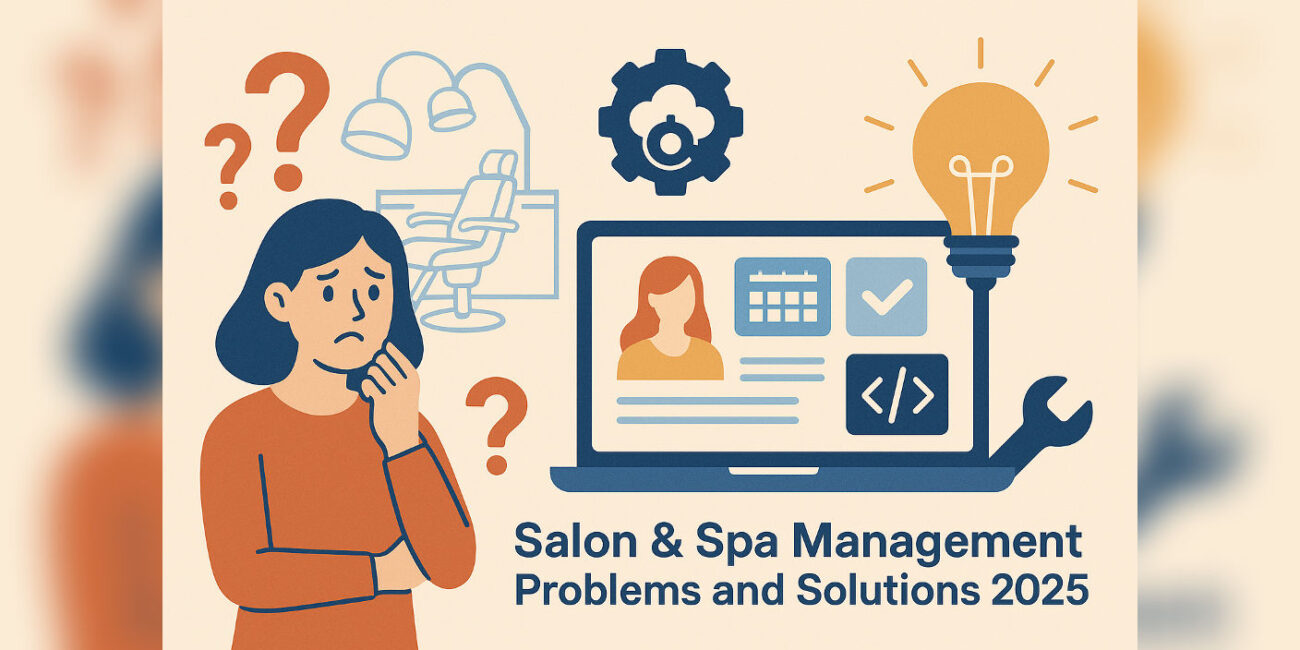
Blogs
Hair and Beauty Salon Business Plan 2025: A Complete Guide

Introduction
The hair and beauty salon industry in 2025 is rapidly evolving with a focus on personalization, sustainability, and technology. As consumer demand grows for tailored beauty experiences, salons are adopting advanced tools like salon booking software and automated marketing to enhance satisfaction. Key trends include eco-friendly practices, which reflect the increasing demand for sustainable products, and digital transformation, which boosts operational efficiency. A solid business plan is essential for navigating these changes, guiding salons through market challenges, financial planning, and strategic management to remain competitive and responsive to modern consumer expectations.
Market Research
Identifying Your Target Market
Understanding your target audience is key to building a successful salon. Focus on demographics like age, gender, income, and lifestyle preferences. Segment your market into specific groups (e.g., working professionals, eco-conscious consumers, etc.) and tailor your services accordingly.
Analyzing Competitors
Conduct a competitive analysis to identify the strengths and weaknesses of nearby salons. Study their services, pricing, and customer engagement tactics. This helps you find gaps in the market and differentiate your salon.
Current and Emerging Trends in the Beauty Industry
In 2025, trends like sustainable beauty products, personalized experiences, and hybrid beauty services (in-person and virtual consultations) are dominating the market. Staying informed on these trends will help you stay relevant and innovate your service offerings.
Business Concept
Defining Your Salon’s Unique Selling Proposition (USP)
Craft a compelling USP to differentiate your salon from competitors. Highlight what sets you apart, such as exceptional service, exclusive treatments, or innovative technology. Your USP should reflect your core strengths and appeal to your target market, whether it’s a luxury experience, specialized techniques, or a unique ambiance.
Types of Services to Offer
Offer a range of services to attract diverse clients: hair services (cutting, coloring, styling), skincare treatments (facials, exfoliation), and spa services (massages, body scrubs). Consider additional offerings like nail care or makeup application to expand your service portfolio.
Consideration of Niche Services
Stand out by offering niche services: eco-friendly products for sustainability, organic treatments for chemical-free options, and specialized techniques like balayage or microblading to attract specific customer segments.
Location & Setup
Choosing the Ideal Location
Select a location with high foot traffic, such as busy shopping districts, to boost visibility. Analyze local demographics to align with your target market, choosing areas that match your salon’s service level. Evaluate nearby competition to find a balance—being near competitors can be beneficial if you offer unique services, but avoid oversaturated areas.
Salon Layout and Interior Design
Design a welcoming reception area with comfortable seating. Arrange service stations for efficient workflow and privacy. Reflect your brand through interior design, using colors and décor that create an inviting ambiance.
Equipment and Technology Requirements
Invest in a reliable POS system for transactions and inventory management. Implement online booking software for ease of scheduling and client management. Ensure you have high-quality salon equipment, maintaining it regularly for optimal service delivery.
Financial Planning
Initial Investment and Startup Costs
Launch your salon with careful budgeting for key expenses: secure a lease for your space, invest in high-quality equipment like styling chairs and hairdryers, stock essential beauty products, and budget for necessary licenses and permits.
Funding Options
Explore funding through business loans, investors interested in the beauty industry, or personal savings. A solid business plan and financial projections can help secure loans or attract investors, while personal savings offer more control with fewer obligations.
Revenue Projections and Break-Even Analysis
Estimate income based on service pricing and client visits. Conduct a break-even analysis to determine revenue needed to cover costs and achieve profitability, guiding your pricing and financial strategies.
Operations & Management
Hiring Qualified Staff
Build a skilled team by hiring experienced stylists with strong portfolios, certified aestheticians trained in the latest techniques, and friendly receptionists adept in customer service and booking systems. Ensure all staff align with your salon’s vision and can deliver high-quality service.
Training and Development
Regularly upskill your team through workshops on new techniques and customer service excellence. Encourage staff to obtain relevant certifications and support their career growth by offering opportunities to attend industry events and additional training programs.
Daily Operations
Efficient operations include managing inventory to avoid shortages, prioritizing exceptional customer service to foster loyalty, and using an integrated booking system for seamless appointment scheduling. Ensure your system allows online booking, reminders, and easy rescheduling to streamline client interactions and operational tasks.
Marketing Strategy
Building Your Brand
Create a distinctive logo that reflects your salon’s identity. Develop a user-friendly website with essential information and ensure it’s mobile-responsive and optimized for search engines. Maintain active social media profiles on Instagram, Facebook, and TikTok to showcase work and engage with clients.
Promotional Activities
Drive client engagement with introductory discounts, seasonal promotions, and a loyalty program offering rewards for repeat visits. Collaborate with influencers to broaden your reach and enhance brand visibility through reviews and social media.
Customer Experience
Creating a Welcoming Atmosphere
Design your salon with comfortable seating, soothing colors, and pleasant décor to create a relaxing environment. Train staff to warmly greet clients and maintain high cleanliness standards by regularly sanitizing workstations and common areas.
Loyalty Programs and Personalized Services
Develop a loyalty program to reward repeat customers with discounts or exclusive offers. Provide personalized services by maintaining detailed client records to tailor experiences to individual preferences, enhancing satisfaction and fostering long-term relationships.
Gathering Customer Feedback and Using It to Improve Services
Collect feedback through surveys, comment cards, or direct conversations. Analyze this feedback to identify trends and address recurring issues. Use insights to continuously improve services and better meet client expectations.
Sustainability & Innovation
Incorporating Eco-Friendly Practices
Adopt sustainable practices to appeal to eco-conscious clients and reduce your salon’s environmental impact. Implement recycling programs, offer eco-friendly products, and invest in energy-efficient appliances.
Embracing New Technologies
Enhance efficiency and client experience with mobile apps for bookings, virtual consultations, and advanced salon software that integrates POS and scheduling tools.
Staying Ahead of Industry Trends
Stay competitive by offering hybrid services and incorporating tech-driven beauty treatments. Monitor trends and attend industry events to keep your salon innovative and relevant.
Challenges & Solutions
Managing Competition
Challenge: Standing out in a saturated beauty market is difficult.
Solution: Differentiate with a unique value proposition and strong branding. Regularly review competitors and refine your services and marketing. Focus on exceptional customer service, exclusive treatments, and effective loyalty programs.
Keeping Up with Trends and Customer Demands
Challenge: Rapid industry changes and evolving preferences can be hard to keep up with.
Solution: Stay updated through industry resources, train staff on new techniques, and use customer feedback to adjust services. Embrace innovation to remain relevant.
Ensuring Financial Sustainability
Challenge: Financial stability is vital amidst fluctuating income and expenses.
Solution: Implement detailed budgeting and cash flow monitoring. Diversify revenue streams, maintain an emergency fund, and regularly review pricing and costs to ensure profitability.
Conclusion
A well-structured business plan is crucial for the success of your salon, providing a roadmap for achieving your goals and managing industry challenges. In 2025, staying adaptable and innovative is key—embrace trends, new technologies, and refine your services to meet evolving demands. To streamline operations and focus on client satisfaction, consider Sparkalz salon booking software. Schedule a demo call to see how it can optimize your appointment management, inventory tracking, and customer engagement, setting your salon up for sustained growth and success.




